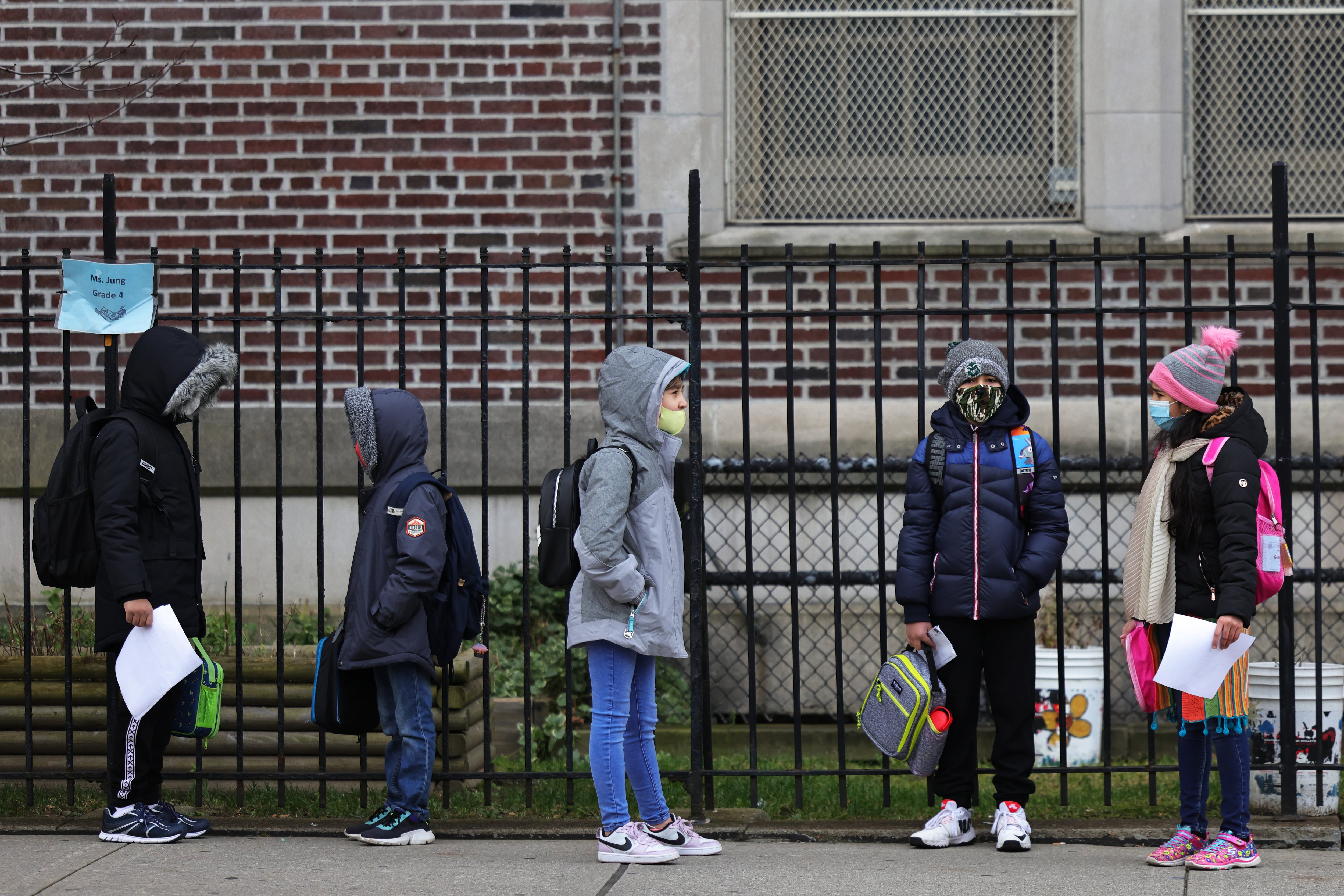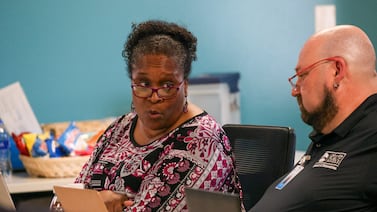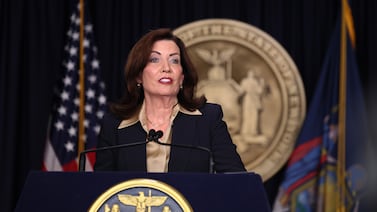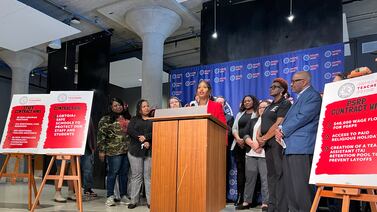When Ana Barros drew up a list of students who were about to fail her class this fall, it was longer than she expected: 22 students out of 86.
What most distressed Barros, who teaches sixth-grade social studies at a charter school in Tulsa, Oklahoma, was that her list included students who didn’t seem like they were struggling — students who had been participating in virtual class, but hadn’t turned in assignment after assignment.
“That was kind of scary,” she said. “Even the kids who seem like they’re OK, and their parents are like ‘Yeah we’re good, we’re good,’ they’re still failing.”
So she went looking for answers. “Everyone has basically said: ‘I didn’t understand it at first, and then I gave up,’” Barros said. “They’re frustrated and they don’t know how to express that.”
In Houston, Los Angeles, Chicago, and elsewhere across the country, more students are failing classes this fall. It’s a worrisome trend, as research has shown that even failing one core class can reduce a student’s chances of graduating high school.
Students whose grades are lowest, teachers say, are both the students who stopped coming to class entirely and those who have simply fallen very far behind. In either case, teachers are scrambling to figure out what to do about the many missing assignments.
Some teachers are giving out more Fs than ever. But many have overhauled their whole approach to grading to keep an even larger number from failing — and then wrestled with whether they made the right call. That means the number of students truly struggling right now is likely larger than the alarming numbers being reported nationwide.
Elaine Allensworth, who directs the University of Chicago Consortium on School Research, which has long studied what keeps students on track for graduation, called it a tough balance.
“You want them to have flexibility right now, because everyone is in these strange circumstances, and it could be really hard for students to complete the assignments teachers initially intended,” she said. But, she added, “Hopefully, with that flexibility, they’re still asking students to do things where they’re going to be learning skills, learning the content.”
This spring, when school was first interrupted by the pandemic, many school districts adopted pass/fail policies, or input grades only if they brought up a student’s average. But this fall, many districts returned to typical grading policies in an effort to project normalcy and encourage students to remain engaged.
That means, of course, that students can get failing grades. And the difficulties of remote learning mean that many more are.
In several places, the increases in failing grades have been most pronounced among students who struggled more even before the pandemic. In Chicago, for example, course failure rates grew much more for Black and Latino students than for their white and Asian classmates. In the more affluent Fairfax County, Virginia, the share of English learners in middle and high school earning two or more Fs jumped, to 35% from 17% the year before.
And while it’s true some students are just struggling with the content, many teachers said the non-academic parts of school are proving just as challenging: keeping up with assignments, staying motivated, and asking for help.
Creacy Brown, who teaches fifth-grade math in Galveston, Texas, said her students who had signed up for more self-paced, independent remote work were having trouble completing it. About half her students are failing her class, she said.
“My students that attend my Zoom classes, those students routinely do well on assignments,” she said. But her asynchronous students often aren’t watching her pre-recorded lessons, “so they’re just basically going in and completing assignments without receiving any instruction.”
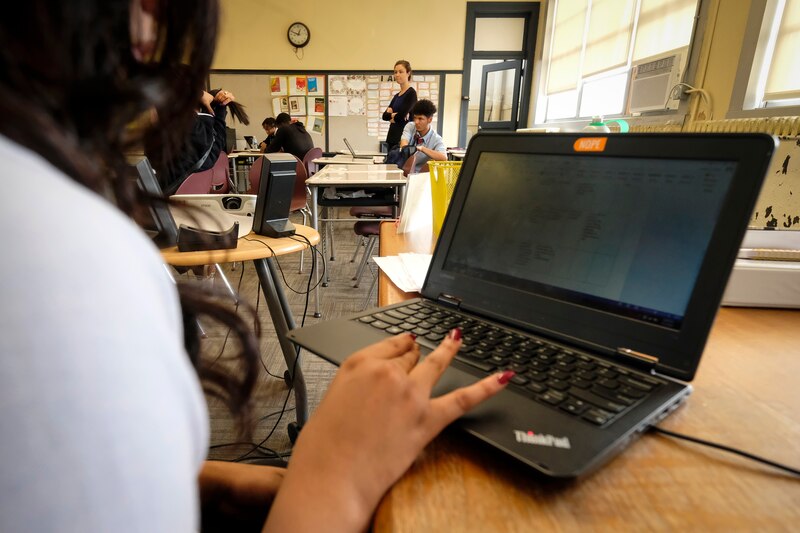
In a virtual setting, teachers also don’t always have good information about why a student isn’t coming to class or normal ways to intervene.
“It is hard for students who need independent help,” said Heather Worley, a high school teacher in Chicago, where students are only allowed to meet remotely one-on-one with teachers with parent permission. “Everything I understand about how to stop a kid from failing involves being present with them. You can pull them out into the hallway. You can say: ‘Hey, come here, you’re staying with me for lunch, go get a sandwich, come back, we’re going to do this until we get it right.’”
In response, some teachers say they’ve changed how — and what — they grade. They’re giving fewer daily assignments and focusing on more important projects. They’re letting students redo work, granting extensions, or assigning incompletes, hoping students can turn those into letter grades by the end of the year.
Barros in Tulsa, for example, excused several smaller assignments, gave extra points to students who’d put in a lot of effort, and then offered a deal to her last few students to let them complete one larger project and end up with a D. Most took her up on it.
Brown, in Galveston, said students in her school who failed a subject during the first marking period were given the chance to complete a “catch-up module” and bring their grade up to a C.
Some teachers are even changing their grading scales. One English teacher in California’s Coachella Valley said her school “strongly encouraged” staff to adjust the lower end: What would normally get an F now gets a D, and Ds have become Cs.
Teachers who are raising grades say it’s not just about boosting averages — they’re also not sure that giving students Fs would lead to them getting more support down the line. So they’re calculating that passing students now could help keep students motivated to continue through a challenging year.
Andrea Thomas, a third-grade teacher who works on the Navajo Nation in New Mexico, says the school district had provided devices late and many of her students still lacked internet access. So the teachers she works with decided it was unfair to fail any students, and created their own grading scale: Students who were attending virtual classes or regularly turning in paper academic packets got As, students who turned in work occasionally got Bs, and students who didn’t turn in anything got Cs.
Instead of worrying about individual assignments, she said, she’s spending all of her energy on helping her students stay engaged and build their reading skills.
“Grades are grades, but they aren’t as meaningful as understanding the content that’s being taught to you,” Thomas said.
Jason Mount, who teaches 11th grade English at a high school in Manhattan, has started adding notes to assignments about how long they should take. He wants students to hand the work in after they hit that time, even if they’re not done. He came up with that idea after dozens of his students, even in his Advanced Placement course, got incomplete grades this fall.
“I want you to stay engaged and not get behind,” he said. “If I find that the kids are not completing things, I assume that it’s because they spent more time than I gave them to do it, and then I can have that conversation with individuals.”
And teachers are also redoubling their attempts to connect with students, no matter how far behind or disengaged they might be. The problem is the volume of students who are struggling.
“There were just so many of them,” Mount said. “It wasn’t like a snowball, it was more like an avalanche.”
Parents who have seen their children fail classes during the pandemic say it can take a toll. April Harris watched her daughter, a ninth-grader who attends a charter high school in Chicago and usually gets top marks, struggle for several weeks to log into her Zoom classes, finding the links often didn’t work. She fell behind and failed several classes this fall, and is hoping to catch up with extra-credit assignments.
“She’s doing everything she can,” Harris said. But “sometimes it can make you feel defeated.”
When so much about school has been upended, it’s hard to know if low grades will be as predictive of student success as they typically are, says Allensworth of the University of Chicago Consortium. Students may bounce back when instruction gets closer to normal.
If those Fs stick on students’ transcripts, though, she worries about the long-term consequences, especially for students who were on the border between success and struggle before the pandemic. “This could push them to not graduate when they might have graduated before,” she said.
That leaves school officials with decisions to make about how to support those students. In the short term, that could mean working to offer in-person school to families who want it, prioritizing students who’ve received low grades for that in-person instruction, and improving the experience of remote instruction in the meantime. In the long term, that could mean intensive tutoring, summer school, or having students repeat a class, though efforts like those can be expensive.
Allensworth points out that traditional high school “credit recovery” is often done online — an option that likely won’t be a good fit for students who struggled with remote school.
Things like tutoring support and an eventual return to in-person learning would be welcomed by Patricia Franklin, who oversees remote schooling for her three grandchildren in Chicago.
Two are receiving some help from special education aides virtually, but they are still struggling, especially her sixth-grader, who failed math this fall. She’s tried giving him cartoon drawing breaks and even a punching bag when things get really tough.
She’s hoping school won’t feel so frustrating if her grandchildren are able to attend in person later this winter, when Chicago Public Schools plans to bring back most younger students.
For now, when her sixth-grader gets disheartened, she tries to stay positive.
“He’s still just thinking he should give up,” she said, “but I just keep trying to encourage him it’ll get better.”

